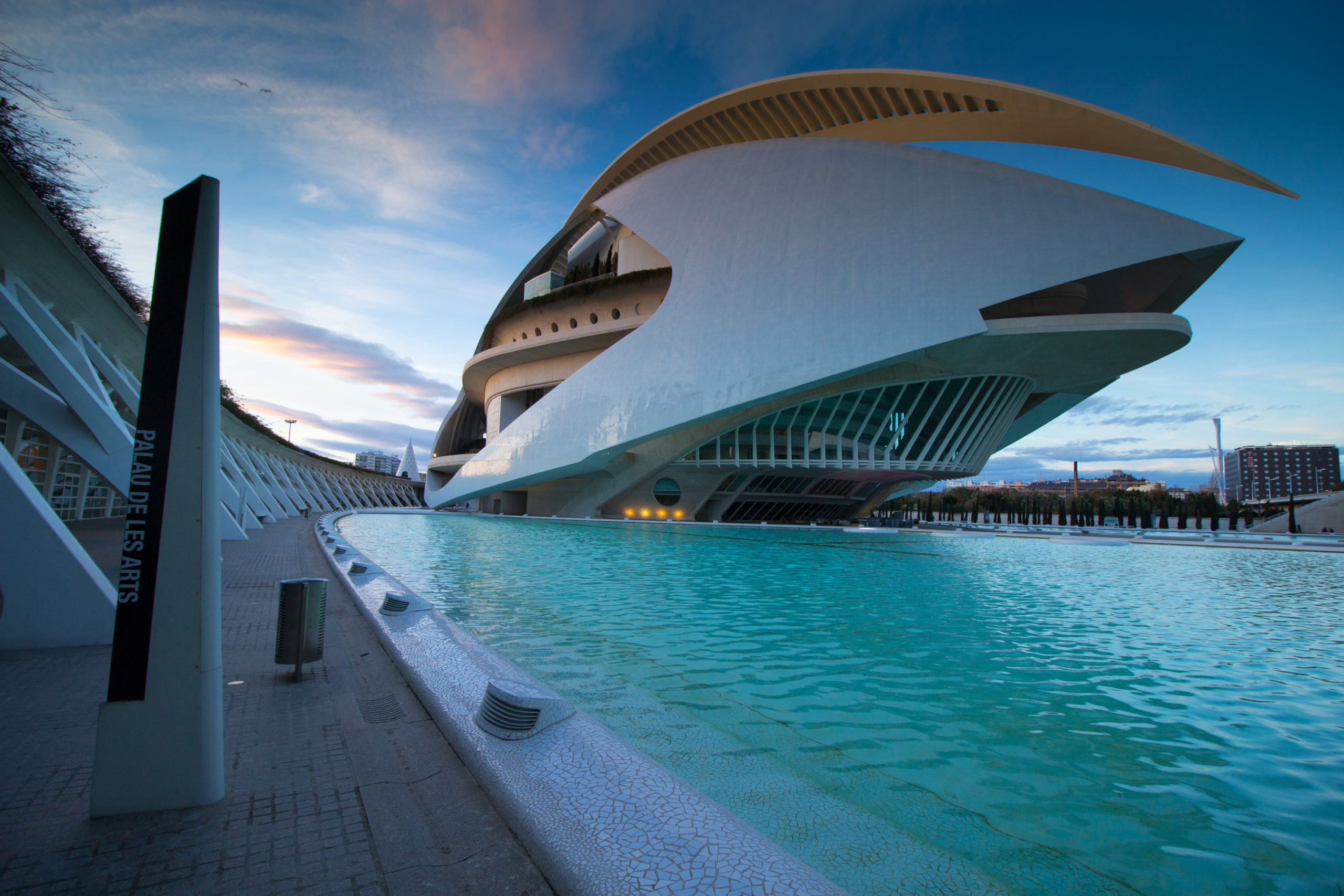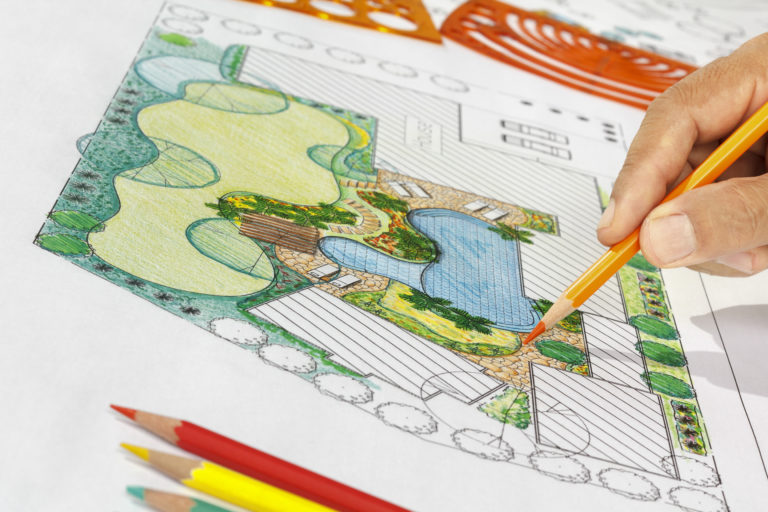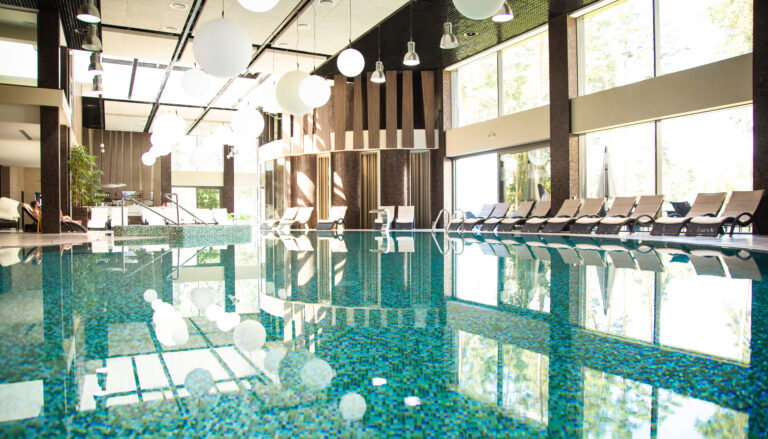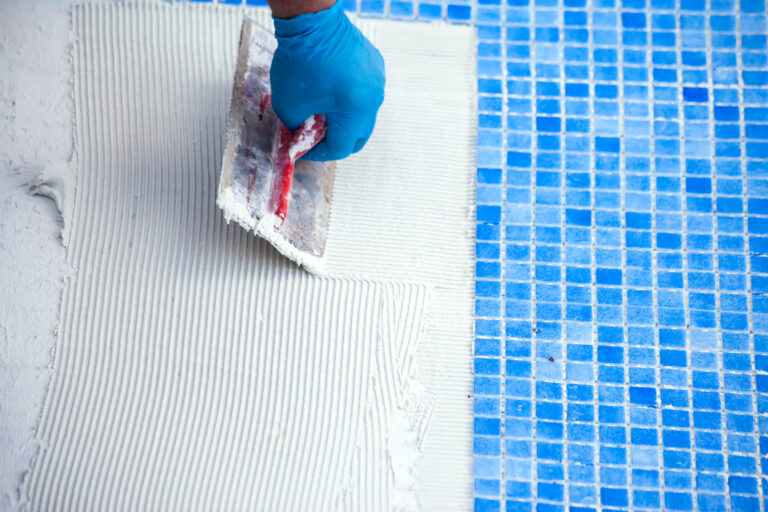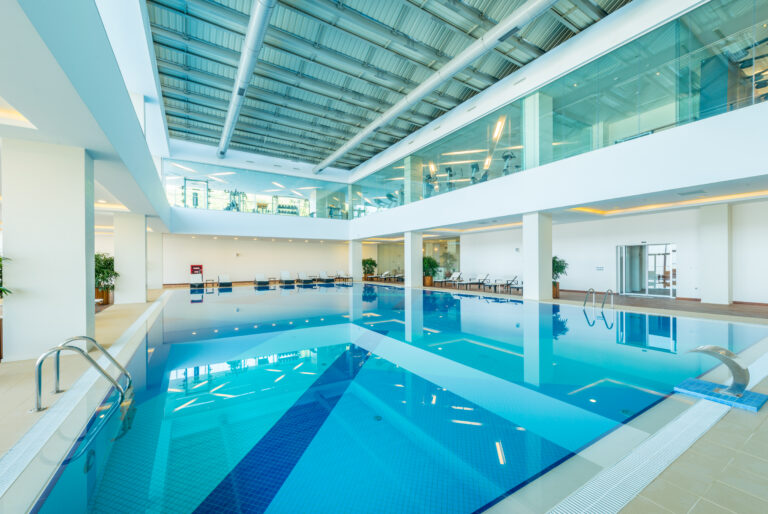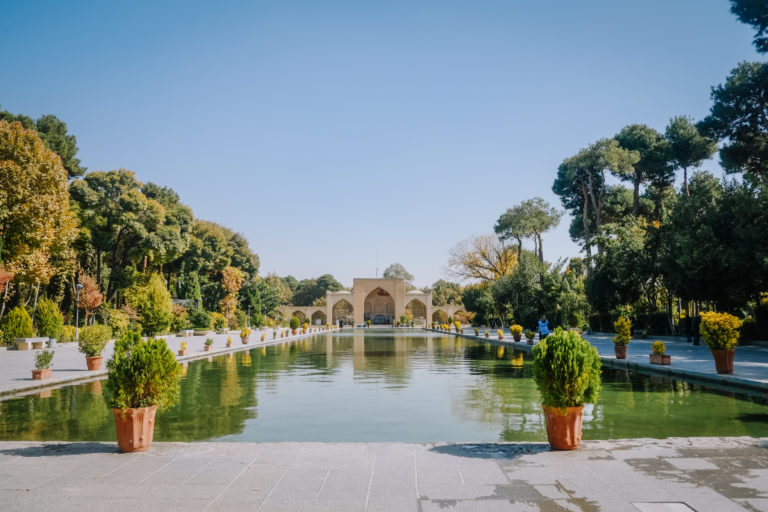The Role of Geometry in Pool Design
You’re planning your dream pool, but have you considered geometry’s role in its design? It’s not just about aesthetics; safety, functionality, and maintenance too hinge on geometric principles.
Dive into this exploration of how angles and shapes can make or break your perfect swimming oasis. By understanding the impact of geometry, you’ll transform your backyard into a masterpiece that’s both visually stunning and practically designed.
Understanding the Basics of Geometry in Pool Design
Let’s dive into understanding the basics of geometry in pool design. It’s not as complicated as you might think. Geometry basics play a crucial role in creating aesthetically pleasing and functional pools. Essentially, pool mathematics is all about shapes and measurements.
Imagine you’re designing your dream pool. You want it to be unique, right? Well, that’s where geometry comes in. It helps you determine the shape of your pool – whether it’s going to be rectangular, circular, or an entirely custom shape. It also enables you to calculate the dimensions accurately so that the pool fits perfectly into your available space.
Don’t forget about depth! The depth of your pool can vary from one end to another or remain constant throughout. Again, this involves knowing how to apply geometric principles correctly.
While designing a pool may seem like a daunting task initially, with a grasp on geometry basics and an understanding of pool mathematics, it becomes significantly more manageable and even enjoyable! So next time you’re looking at beautiful pools wondering how they came up with such designs – remember: it’s all down to geometry.
The Influence of Geometric Shapes on Pool Aesthetics
You’ve now understood the basics of geometry in pool design, but have you considered how shapes can drastically alter a pool’s visual appeal?
It’s time to delve deeper into this concept and discuss the role that geometric trends play in enhancing the aesthetics of pools.
In our next discussion, we’ll explore how selecting certain shapes could be your game-changer for creating a visually stunning swimming pool.
Shapes Impacting Visual Appeal”
In designing your pool, the shapes you choose can greatly impact its visual appeal. You must consider geometric illusions in pool design to create a stunning and inviting aquatic space. These illusions can make your pool seem larger or smaller based on the shapes and lines you select.
For example, a rectangular shape gives an illusion of length, while round pools often appear cozy and intimate.
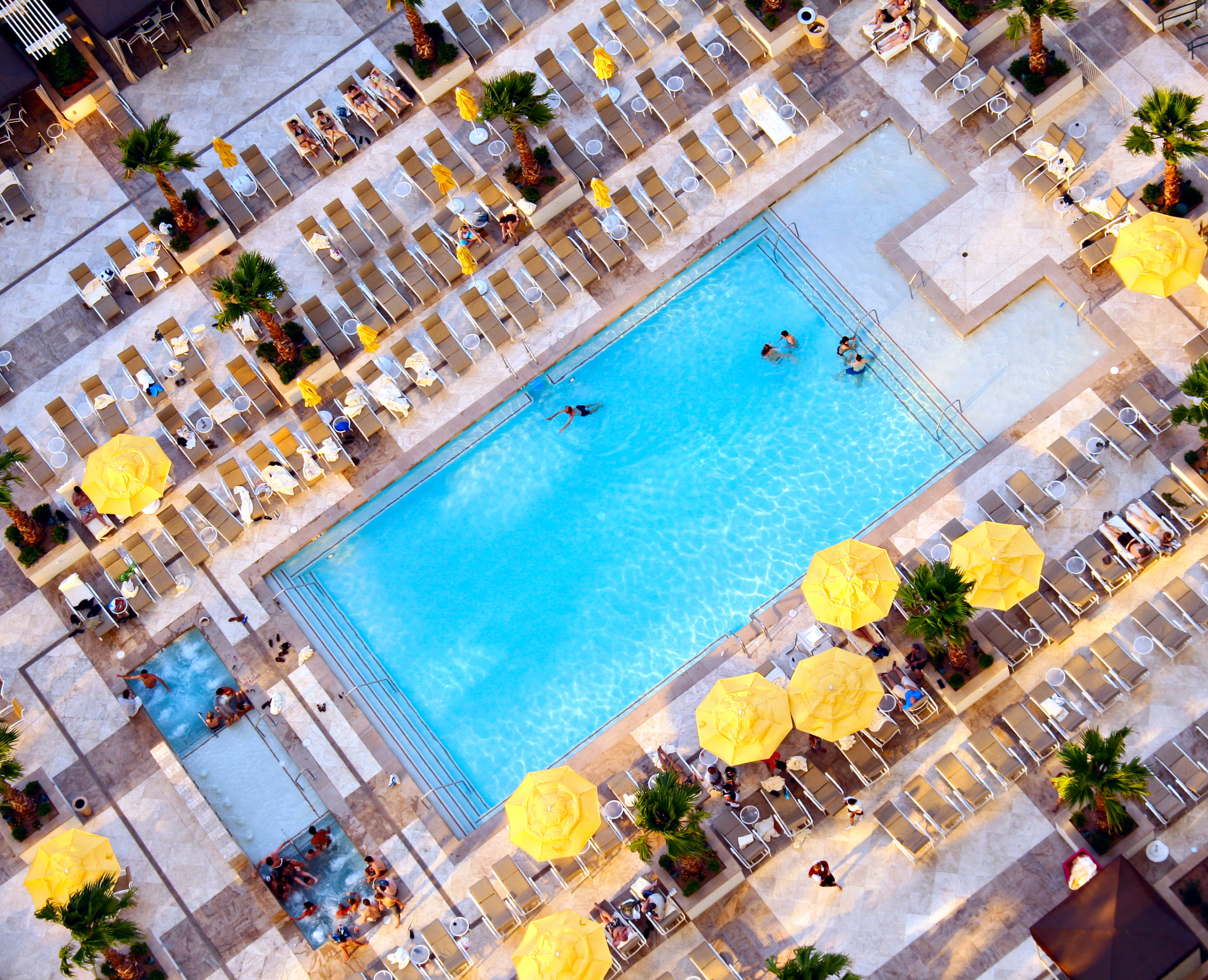
Investing in geometry inspired pool accessories enhances this effect further. Think loungers with bold angular lines or circular floaties that mimic the curves of a round spa area. These details reinforce your chosen geometric theme, adding another layer to its visual charm.
Geometric Trends in Pools
There’s a rising trend in incorporating geometric elements into water features, specifically transforming traditional pool shapes into striking, modern designs.
You see, pool geometry maths isn’t just about calculating the volume of water your pool can hold. It’s also about creatively using shapes and lines to enhance aesthetic appeal and functionality.
Take for instance geometric pool lighting. When used effectively, it can highlight the unique contours of your pool, creating dramatic shadows and reflections that add depth to your outdoor space at night. But it’s not just for show – proper lighting placement also increases safety by illuminating steps and shallow areas.
So don’t shy away from experimenting with these geometric trends in pools; they’re here to turn your backyard into an oasis of design ingenuity!
Role of Geometry in Pool Safety Measures
We’re seeing an increasing emphasis on the use of geometry in improving pool safety measures. You’ve likely noticed how geometric safety barriers and shape-dependent drowning risks are becoming key considerations.
1. Geometric Safety Barriers: These play a crucial role in preventing accidental falls into the pool. You’ll find they often take forms such as triangular or rectangular nets, rails, and fences that incorporate geometric principles to maximize their effectiveness.
2. Shape-Dependent Drowning Risks: The specific shape of your pool can contribute to potential hazards. For example, circular pools may pose a risk as children can get trapped in the continuous current created by water moving around the edges.
3. Pool Geometry Design: By using smart geometry in designing your pool’s layout, you can minimize these known risks and enhance overall safety.
So next time you’re planning a swim or considering building your own pool, remember – it’s not just about aesthetics but also about ensuring everyone’s safety through clever use of geometry!
The Science Behind Geometric Pool Design
You might be wondering how science plays into creating safer swimming environments, right? Well, it’s all about geometric symbolism in pools and spatial perception in pool design. When planning a pool, understanding the relationship between shapes and space can greatly enhance safety.
Consider this:
| Geometric Shape | Symbolism |
| Circle | Unity, wholeness |
| Square | Stability, balance |
| Triangle | Change, conflict |
Each shape communicates different feelings which play into our spatial perception. A circle pool might feel more inviting due to its connotation of unity while a square one could feel reliable and safe because of its association with stability.
Now imagine these principles applied on a larger scale – in water parks or public swimming facilities. It’s not just about aesthetics; it’s a science-driven approach to ensure swimmers’ safety by designing spaces that are intuitive to navigate and comfortable to use.
So next time you’re taking a dip remember: every curve, edge or corner is there for more than just looks. They’re part of an intricate design aimed at keeping you safe while ensuring your swimming experience remains enjoyable.
How Geometry Impacts the Functionality of Pools
It’s fascinating to think how shapes and sizes can impact the functionality of your swimming area, isn’t it? Well, geometric regulations play a significant role in pool design. They’re more than just aesthetic choices; they influence how well your pool works.
Consider water circulation, for example. The shape of your pool determines how water moves around. A poorly designed shape might leave some areas stagnant while others get too much flow. That’s where geometry’s role in water circulation comes into play. It helps ensure every part of your oasis is equally serviced by the filtration system.
A rectangular or oval pool allows for smoother water flow compared to an irregularly shaped one because its simple geometry facilitates even distribution of force from pumps and filters across all areas. But don’t let that deter you from experimenting with other designs! As long as you keep the principles of geometry in mind while planning out the layout, you’ll have no problem achieving a balance between form and function.
So whether you’re looking to build a new pool or renovate an existing one, remember: Geometry isn’t just about creating visually pleasing designs-it’s also about making sure your swimming experience is top-notch!
Designing Different Pool Shapes: A Geometric Perspective
You’ve likely noticed the wide array of pool shapes available, but have you ever considered how geometry plays into those designs? It’s not just about looks; different shapes can offer various benefits in terms of functionality and efficiency.
Let’s dive into a discussion on the role of geometry in designing pool shapes, explore the advantages each shape brings, and discover how designing for functionality can enhance your overall swimming experience.
Geometry in Pool Shapes
Understanding the geometry involved in pool shapes can make a significant difference in the overall design and functionality of a pool. You’ll find that geometric pool accessories can enhance the aesthetics while adhering to your chosen shape’s mathematical principles.
Consider this: Pool Geometry Mathematics isn’t just about creating visually pleasing designs, it’s also about optimizing space and ensuring safety. For instance, sharp angles may not be ideal for kids’ pools, while circular or oval shapes might limit swim lanes for those who like laps.
So, as you plan your dream oasis, don’t overlook these elements. Remember, the right balance between form and function can elevate your swimming experience to new heights.
Because when it comes to designing pools, geometry is more than just shapes-it’s an art.
Benefits of Various Shapes
Different shapes can offer various benefits in pool design. Rectangular pools are perfect for those who love doing laps, as the familiar shape brings comfort. Kidney-shaped pools, on the other hand, blend seamlessly with natural landscapes, creating a natural oasis in your backyard. Oval pools give off an elegant vibe and add a sophisticated touch to any home. Free-form pools, on the other hand, let you express your creativity and style.
Shape versatility is key in pool design, and pool mathematics plays a significant role in it. Each shape has its merits, so it’s important to pick wisely. Your choice of shape can transform your backyard into a sanctuary that reflects your personality and suits your lifestyle perfectly.
Designing for Functionality
When it’s about designing for functionality, it’s not just the shape that matters, but also how you plan to use your space. Consider pool lighting geometry – a crucial aspect of your design. Strategically placing lights in geometric patterns can illuminate your pool and create stunning visual effects. It doesn’t only enhance safety by providing visibility; it transforms your pool into a nighttime oasis.
Next, think about geometric pool accessories. These aren’t merely aesthetic additions; they serve functional purposes too. For example, angular loungers or circular floats can add comfort and fun to your swim experience.
Ultimately, remember this: Your design decisions should reflect utility first, then style – that’s how you get the most out of your space.
Role of Geometry in Pool Construction and Landscaping
You’ll find that geometry plays a crucial part in both the construction and landscaping of your pool, influencing everything from its shape to its overall aesthetic appeal. Geometric landscaping allows you to create a unique design that complements your home’s architecture and enhances the beauty of your yard.
Poolside geometry, on the other hand, is all about using different shapes and sizes to make your pool more functional and visually appealing. A rectangle might be perfect for swimming laps, while a kidney or freeform shape can offer more natural aesthetics.
See the table below illustrating how geometric shapes contribute:
| Shape | Functionality | Aesthetic Appeal |
| Rectangle | High | Moderate |
| Kidney | Moderate | High |
| Freeform | Low | Very High |
With proper use of geometry in pool construction and landscaping, you’re not just creating a place for fun water activities. You’re crafting an outdoor living space that combines functionality with beauty. It’s all about striking the right balance between practicality and aesthetics. This way, you’ll have a retreat you can enjoy for years to come.
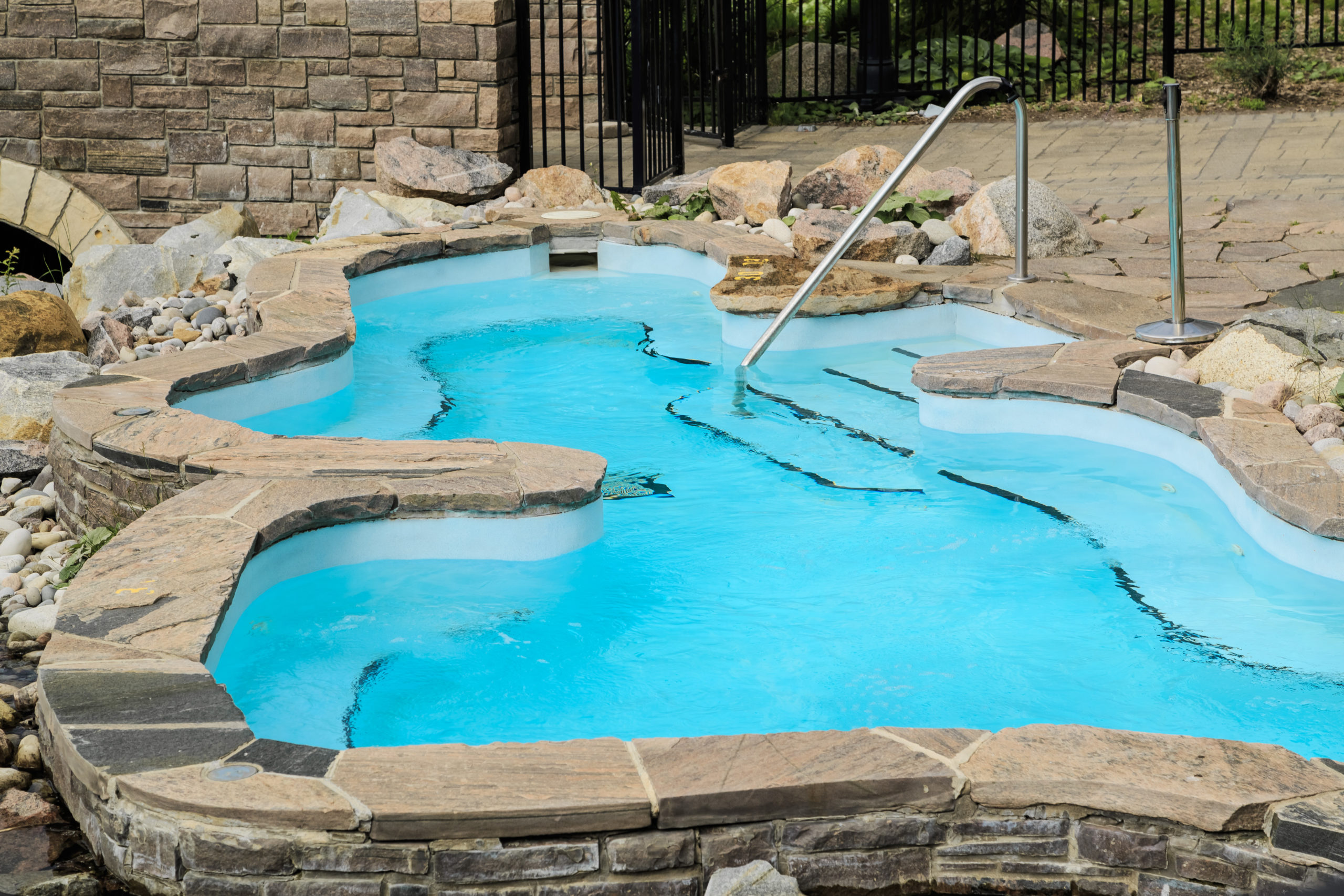
Geometric Considerations for Pool Maintenance
In maintaining your oasis, it’s key to consider the shapes and sizes involved as they can greatly impact the ease and methods of upkeep. Geometry’s role in pool cleaning is not just a trivial matter; it’s an essential aspect you’ll need to understand.
Different geometric designs influence how dirt and debris circulate within the pool, affecting your ability to clean effectively.
Picture this: if you have a rectangular pool, water circulation tends to be more consistent. This uniform flow allows automatic cleaners to easily navigate corners and edges, making maintenance a breeze. However, with irregularly shaped pools like kidney or freeform designs, water movement becomes less predictable. Dead spots – areas where water doesn’t move as much – might form, leading to algae buildup that’s harder to combat.
Geometric considerations for water circulation don’t stop there. The depth also plays a vital role in ensuring proper chemical distribution in your pool. Shallow pools tend to have better circulation compared to deep ones which may require additional equipment for effective cleaning.
So remember: when dealing with pool maintenance, understanding geometry isn’t just extra credit – it could make all the difference!
Case Studies: Successful Geometric Pool Designs
Let’s delve into a few case studies showcasing successful use of shapes and sizes in backyard oases. You’ll see how the right design decisions can transform an ordinary pool into an extraordinary retreat.
First up is a geometric pool lighting project in Palm Springs. Here, the homeowners used triangle-shaped lights to add depth and dimension to their rectangular pool during the evening hours. The result? An inviting outdoor space that’s as functional as it is beautiful.
Next, consider a home in Miami where poolside geometry decor was put to fantastic use. The owners integrated round tables and chairs with angular lines, creating a fascinating contrast against the backdrop of their kidney-shaped pool. It’s not just eye-catching; it provides ample seating for entertaining guests too.
Finally, let’s look at a house in Austin where both elements were combined for maximum effect. Geometric pool lighting illuminated the water’s edge while varied shapes of furniture added visual appeal on land.
In each case study, you’ll notice that careful planning played a significant role in success. Whether it’s choosing light fixtures or selecting patio furniture, remember your choices will dictate your backyard’s feel and functionality.
Frequently Asked Questions
How Does the Geometry of a Pool Affect Its Cost of Construction and Maintenance?
You’re building a pool, right? Geometry impacts your costs. Complex geometric aesthetics or irregular pool shapes can increase construction and maintenance expenses due to higher material needs and more intricate upkeep requirements.
What Are Some Common Geometric Errors Made During Pool Design and How Can They Be Avoided?
You might overlook geometric aesthetics in pool design, leading to unattractive shapes. Ensure safety by avoiding sharp angles that may cause injuries. Proper planning and precise measurements can help you avoid these errors.
How Does Geometry Play a Role in the Design of Pool Accessories Such as Slides and Diving Boards?
In designing pool accessories like slides and diving boards, you’re utilizing geometry. It’s crucial for slide safety and diving board dynamics, determining angles, heights, and distances to ensure a fun but safe experience.
How Does the Pool Geometry Affect the Efficiency of Heating and Filtration Systems?
Pool geometry directly impacts your heating and filtration system’s efficiency. A pool’s shape influences water circulation, ensuring equal heat distribution and effective filtration. So, you can’t overlook geometric influence on aesthetics and safety in pool design.
Can the Geometry of a Pool Have Any Impact on the Swimmers’ Performance or Comfort?
Absolutely, the geometry of a pool can influence a swimmer’s performance and comfort. Sharp angles may pose safety risks, while smooth curves enhance speed. It’s all about optimizing for swimmer safety and efficiency.

